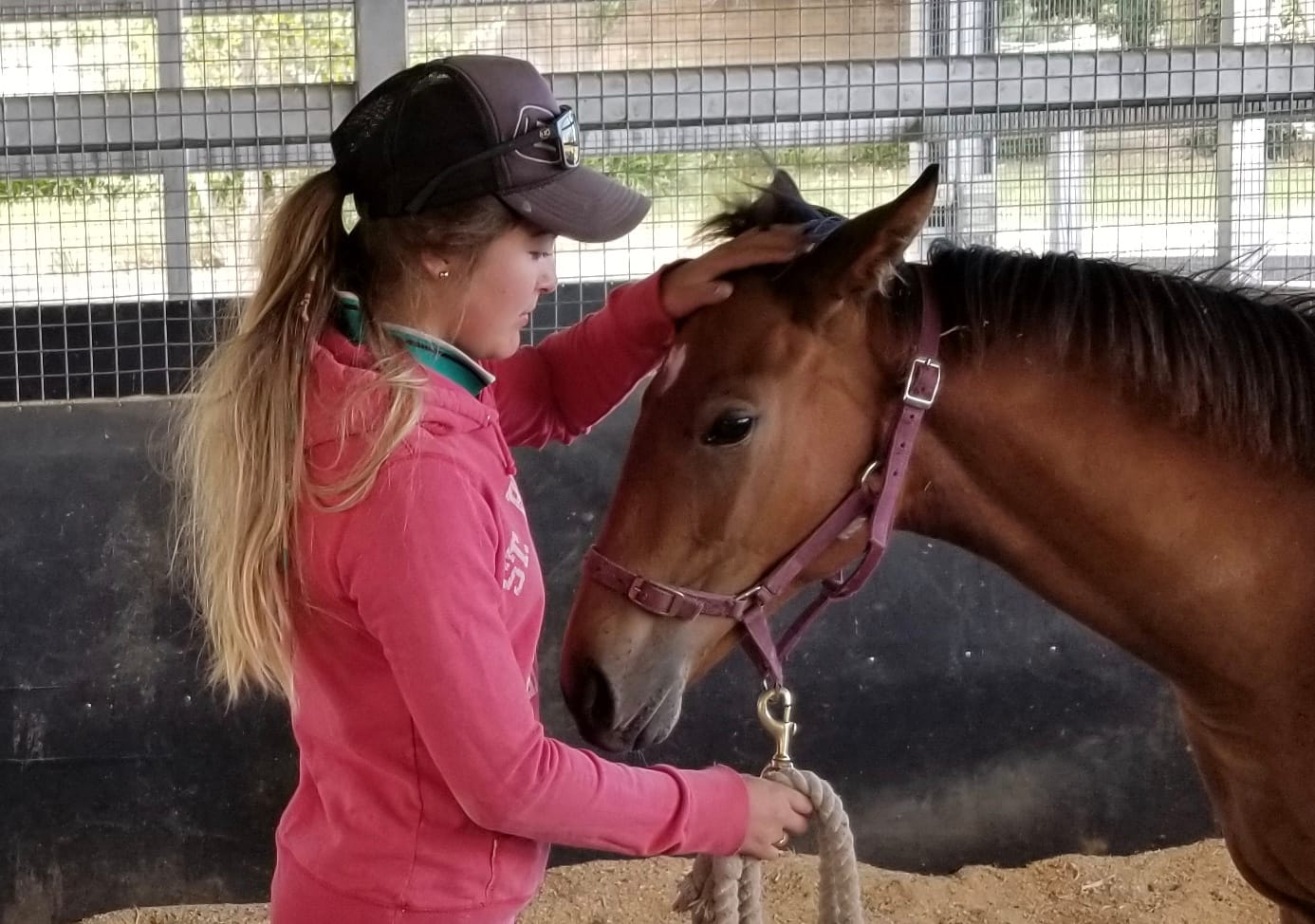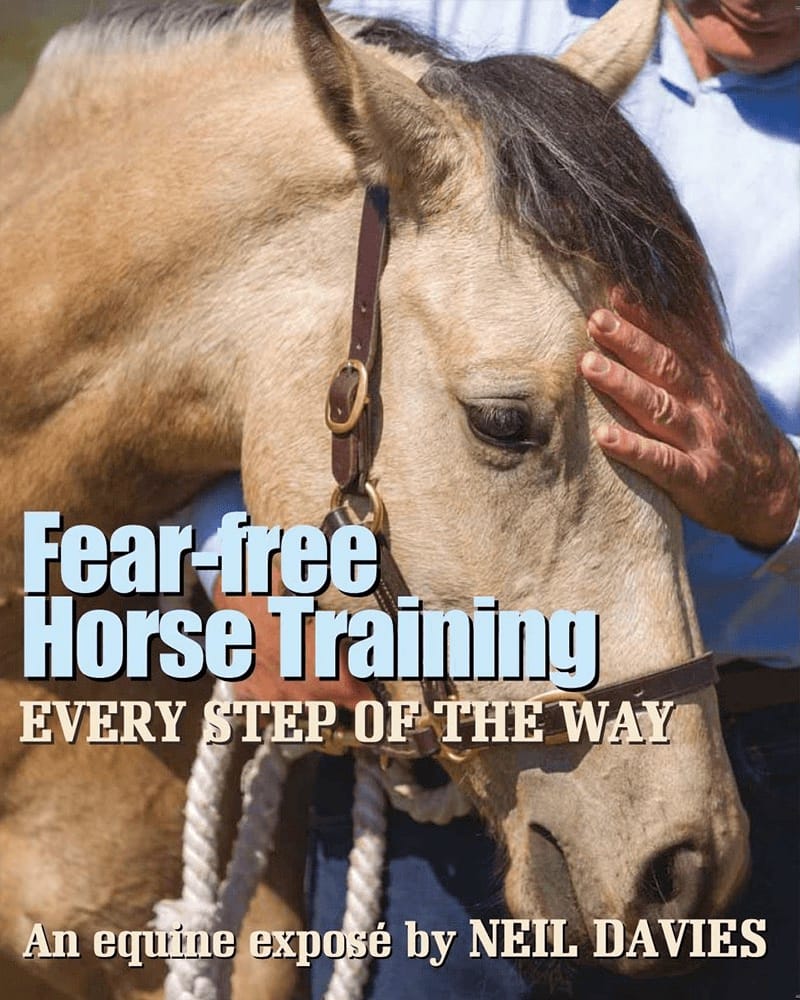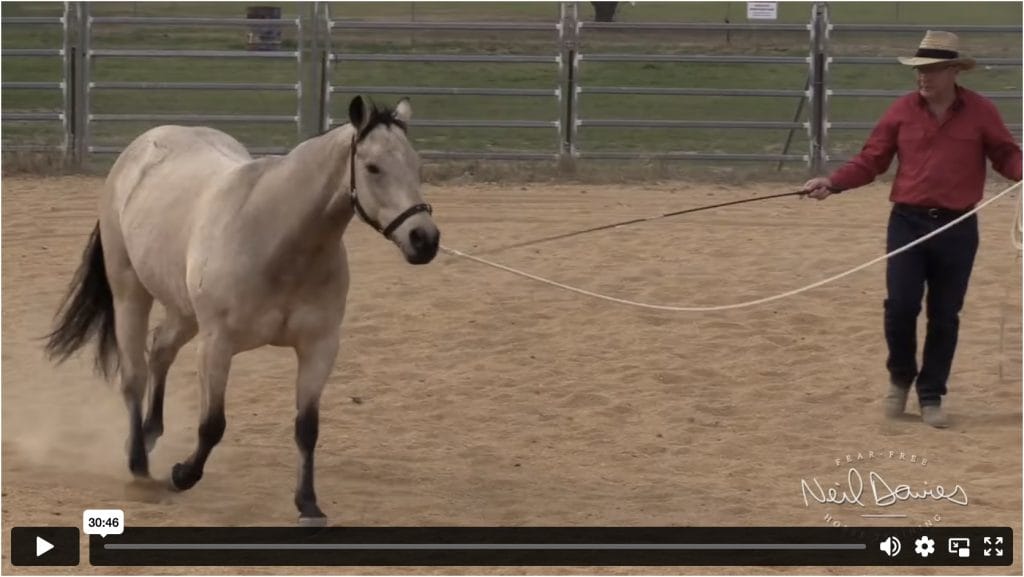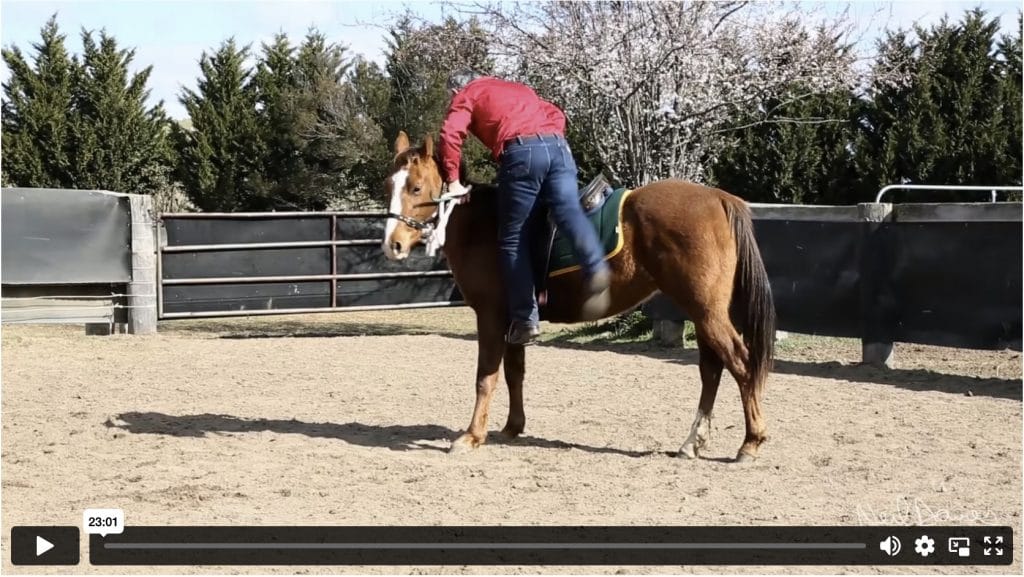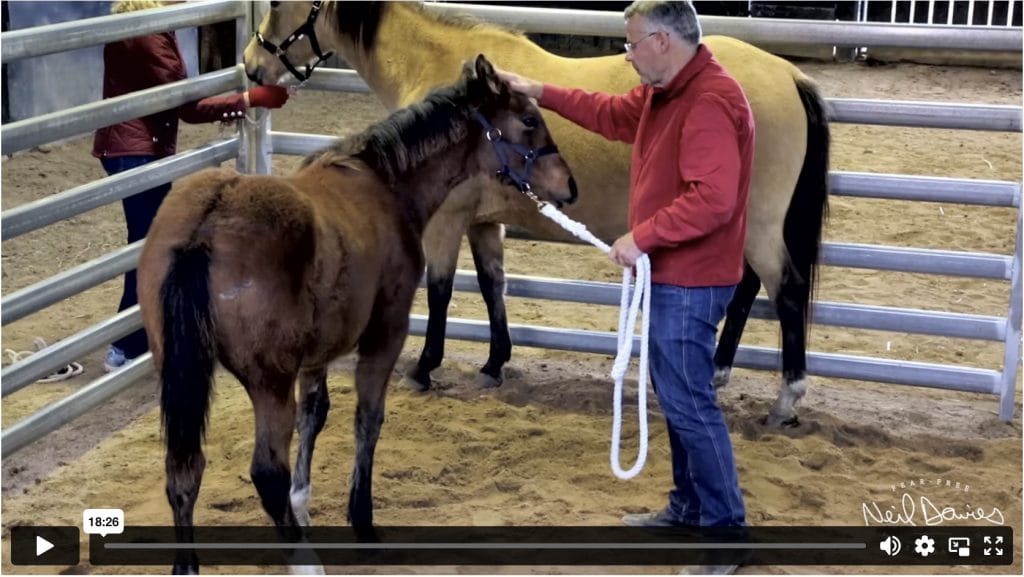When a horse lays his ears back and bites, the handler invariably moves out of the way and yells “No” or “Don’t bite” or something similar.
After all, people don’t want to be bitten.
Then, a few seconds later, the handler hits at the horse.
The horse knows this is coming and may ‘counter punch’ with another bite.
And so the cycle continues:
Horse lays ears back.
Handler feels scared.
Horse bites, handler panics and moves out of the way.
Handler reacts by yelling and hitting.
And…
The cycle repeats itself.
Let’s think about this from a horse’s point of view:
1. The handler annoys the horse, maybe during grooming or by pinching the girth or being inconsistent.
2. The horse wants to get rid of the annoyance, so he lays his ears back and bites.
3. At the exact time the horse bites, the handler moves away.
And so the horse gets rid of his annoyance and is unwittingly rewarded for biting.
4. The handler yells at the exact time biting occurs. From a horse’s point of view, biting produces a yelling response.
Though you think you’re ‘reprimanding’ your horse for biting, yelling is actually just another annoyance for him to put up with.
You may not realise it, but yelling will reinforce the unwanted behaviour and make your horse bite again.
5. Next in this chain of mistakes, the handler hits at the horse a few seconds after the event.
This is wrong.
Horses learn only from the immediate result they receive.
If you hit your horse after he bites, he won’t know he’s being ‘punished’ for biting.
In fact, your horse won’t know why you’re hitting him and he’ll become even more annoyed and probably respond by biting some more.
So how do we break this cycle? What’s the best response when a horse bites?
Hear this:
Your best response is no response at all.
Everyone calm down and take note.
I don’t mean that you allow your horse to bite you.
I mean that you stand still and don’t move away.
Don’t talk or yell.
Remain silent.
You must show your horse what you want him to do.
Have a firm grip on the lead rope at the exact time your horse bites.
Hold your horse from biting you and rushing over you.
Don’t move away.
When your horse stands, rub his head.
Show him it’s easy and pleasant to do as you ask.
Keep hold of the lead rope and the moment your horse moves, or tries to bite, make things a little unpleasant for him by giving a sharp tug on the halter.
If your horse doesn’t stand when you ask, pull his head around and move him in a very small circle.
Very small circles are unpleasant for horses.
Immediately he stands as you ask, release the pressure on his lead rope and rub his head.
You must show your horse that it’s easy and pleasant to do as you ask.
Equally, you must show him it’s slightly unpleasant to move, bite or fidget.
Remember, you’re not punishing your horse for biting.
Instead, you’re simply showing him that standing quietly is easy and pleasant for him.
If you’re consistent…
And this means EVERY time you’re with your horse…
It won’t be long before he relaxes and learns to stand quietly without biting.

